InteractionCraft
Freelance UX Consulting
Busines Model & Strategy, Content, Interaction Design, Business Management, UX Consultancy
InteractionCraft is a one-man design consultancy focused on helping entrepreneurs, startups and small to medium companies with design in their business. Did this by providing high quality feedback and advice about digital product strategy, usability, visual and interaction design.
For building InteractionCraft I studied the freelance UX consultancy market, understood what was being offered by other designers, developed a pair of MVP experiments to test my own vision, iterated the business model and the business strategy, got a clear vision of what potential clients needed and what I could offer, developed a website to clearly speak about my offering and created a deliverable document format that included an initial design analysis, a list of design problems, a list of design "quick wins" and design advice in the form of a "top design recommendation".
Initial analysis
After checking out few fellow freelance UX designers that offered usability and design reviews, I decided to answer the following questions about how I wanted to proceed:
- What are my broad aspirations for my "organisation"? and Which are the concrete goals against progress would be measured?
- Where are am I going to play? Where am I not playaing?
- How will I win again competition in the playfield?
- Wich capabilities should I build and maintained?
- Which management systems for operation will I need to build and maintain those capabilities?
This took several days of thinking, understanding what should I do. My answers became more specific and shorter as I iterated my ideas and vision, there were a total of 9 iterations
This is a capture of my first 5 iterations:
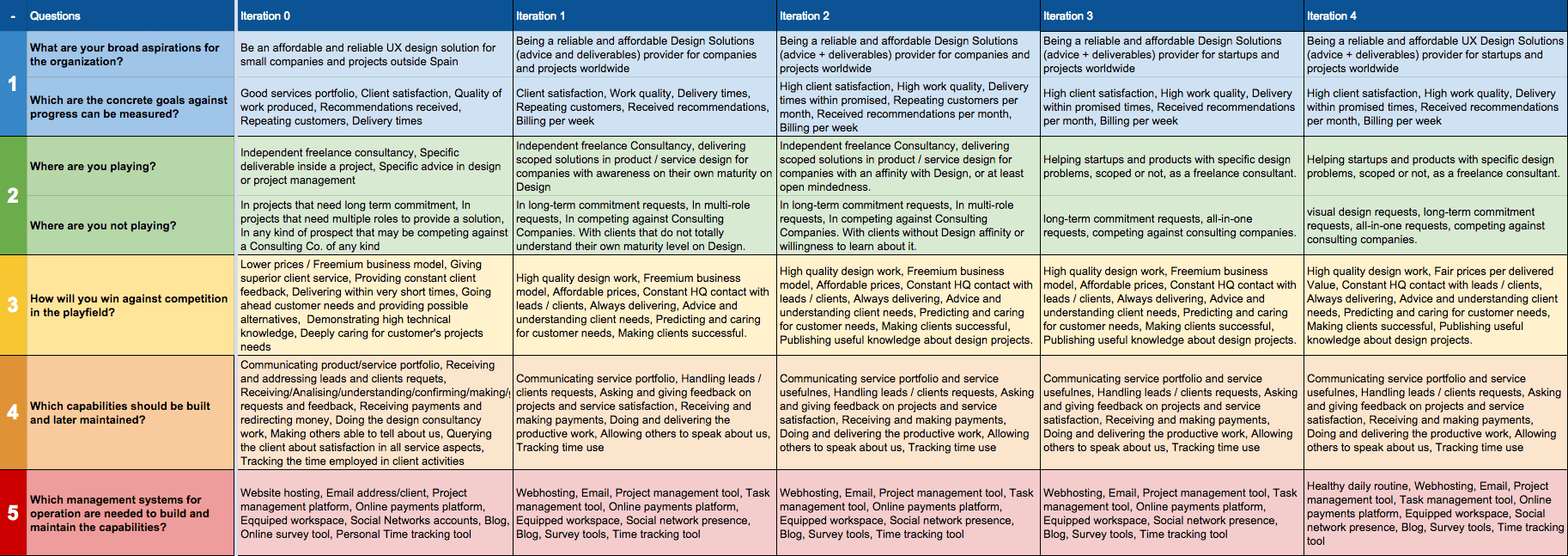
Marketing content and Website design
Before even deciding on colours, typography or layout I wrote the whole marketing message to be used in the website, as my vision and ideas evolved so did the content.
Initially I went for a consulting service with 3 distinct aspects with not-so-original catchy names:
- Express Feedback: A short review of a client's petition, delivered as a text-only email, short and quick.
- Direct Advice Report: A more elaborate feedback, with complete design critique and advice for improvement, delivered as a PDF Report.
- UX Design Consultation: Generic services for clients that could ask for more than the previous ones.
This is a sample of how those websites and messages where initially conceived, in terms of visual design, typogramy, colour, message, etc.:
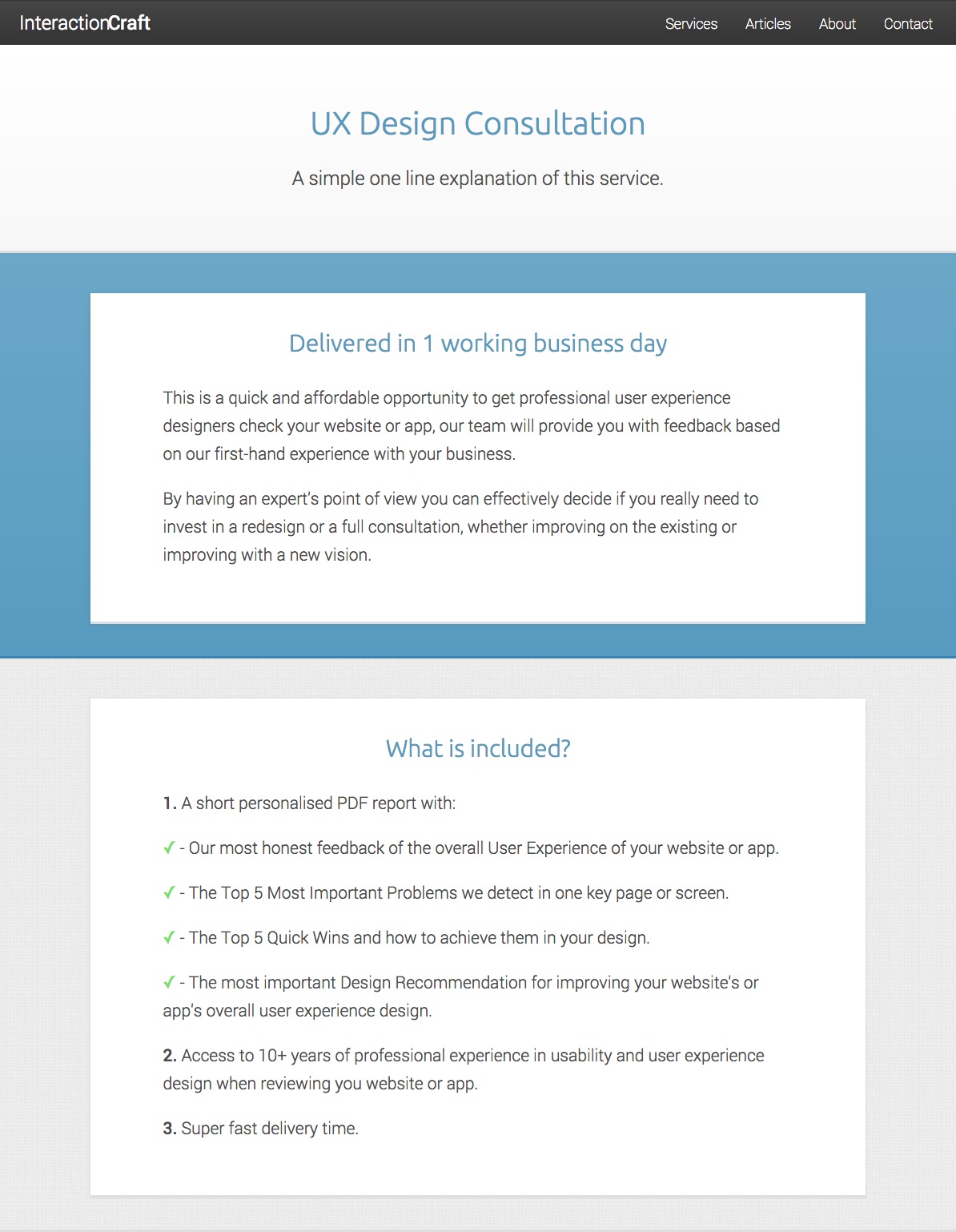
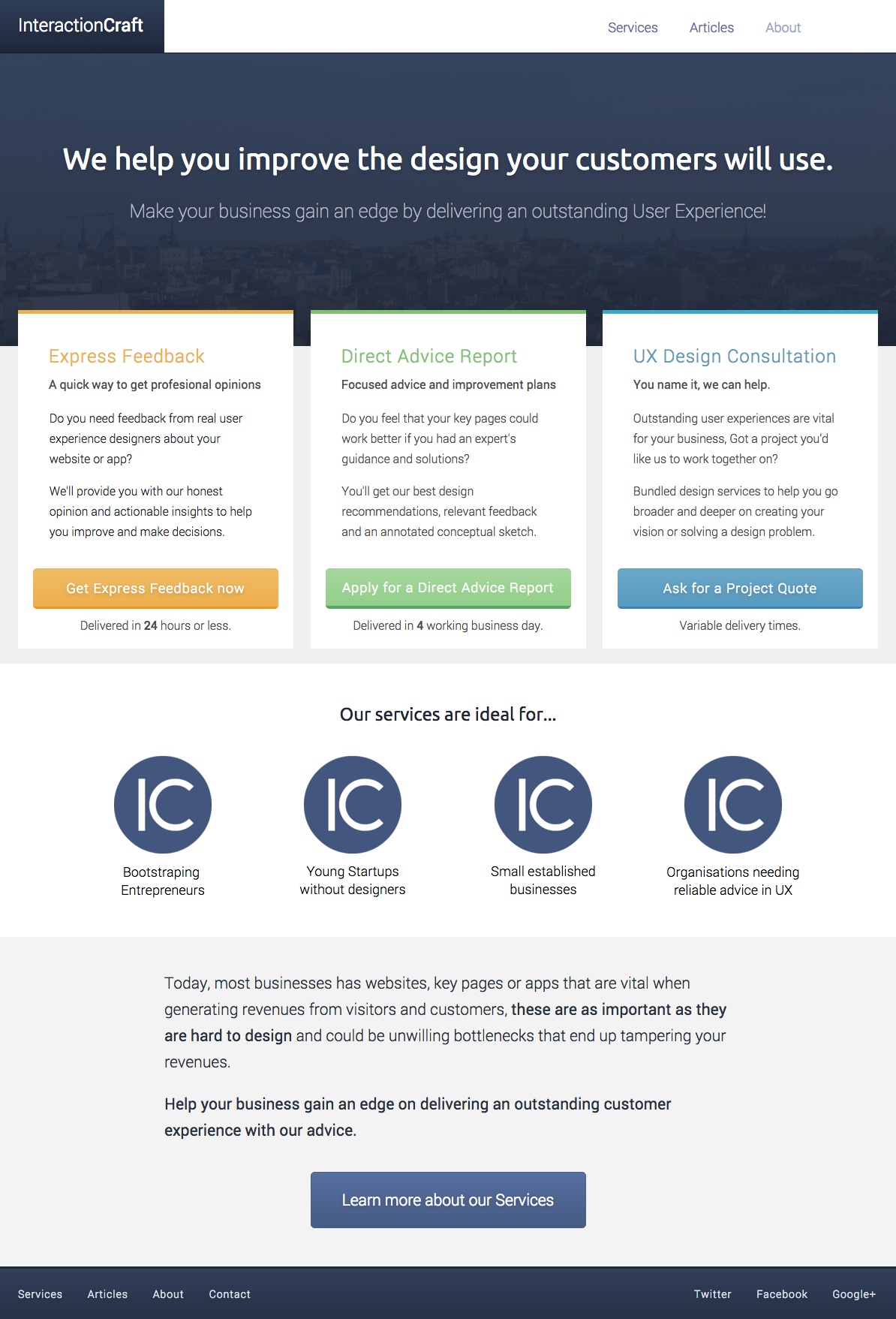
I didn't felt happy about it, after some deliberation with friends and potential customers decided to cut all services and focus on the design critique and advice.
The reasons I found for getting rid of most of the service offering was:
- Potentially too much work for a single person, If all 3 services got sold at the same time I would be in knee-deep work and zero life.
- Express Feedback was too shallow, almost everyone I asked seemed uninterested in my initial offer.
- Remote consultation would require a lot of work creating project proposals.
Pivoting!
Single service offer
I didn't felt happy about it, after some deliberation with friends and potential customers decided to cut all services and focus on the design critique and advice.
The reasons I found for getting rid of most of the service offering was:
- Potentially too much work for a single person, If all 3 services got sold at the same time I would be in knee-deep work and zero life.
- Express Feedback was too shallow, almost everyone I asked seemed uninterested in my initial offer.
- Remote consultation would require a lot of work creating project proposals.
These are the 2 websites with the new offer called UX Feedback Report, the all-white was my MVP, it really caught the attention of a few companies, I also created a logo that got changed into the pixel-like squares in a circle (InteractionCraft initials) and changed the design and service offer of the website, here can be seen both:
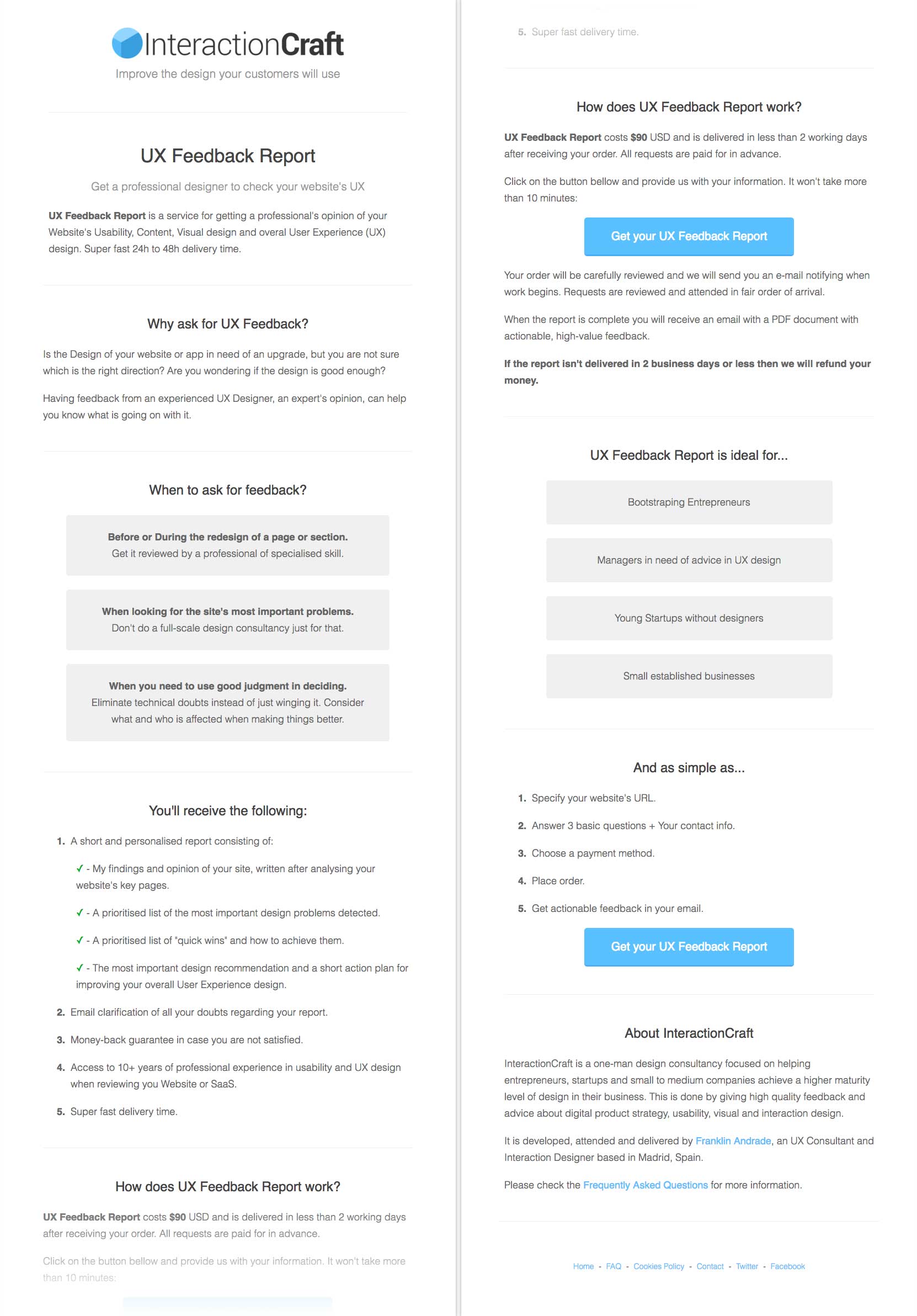
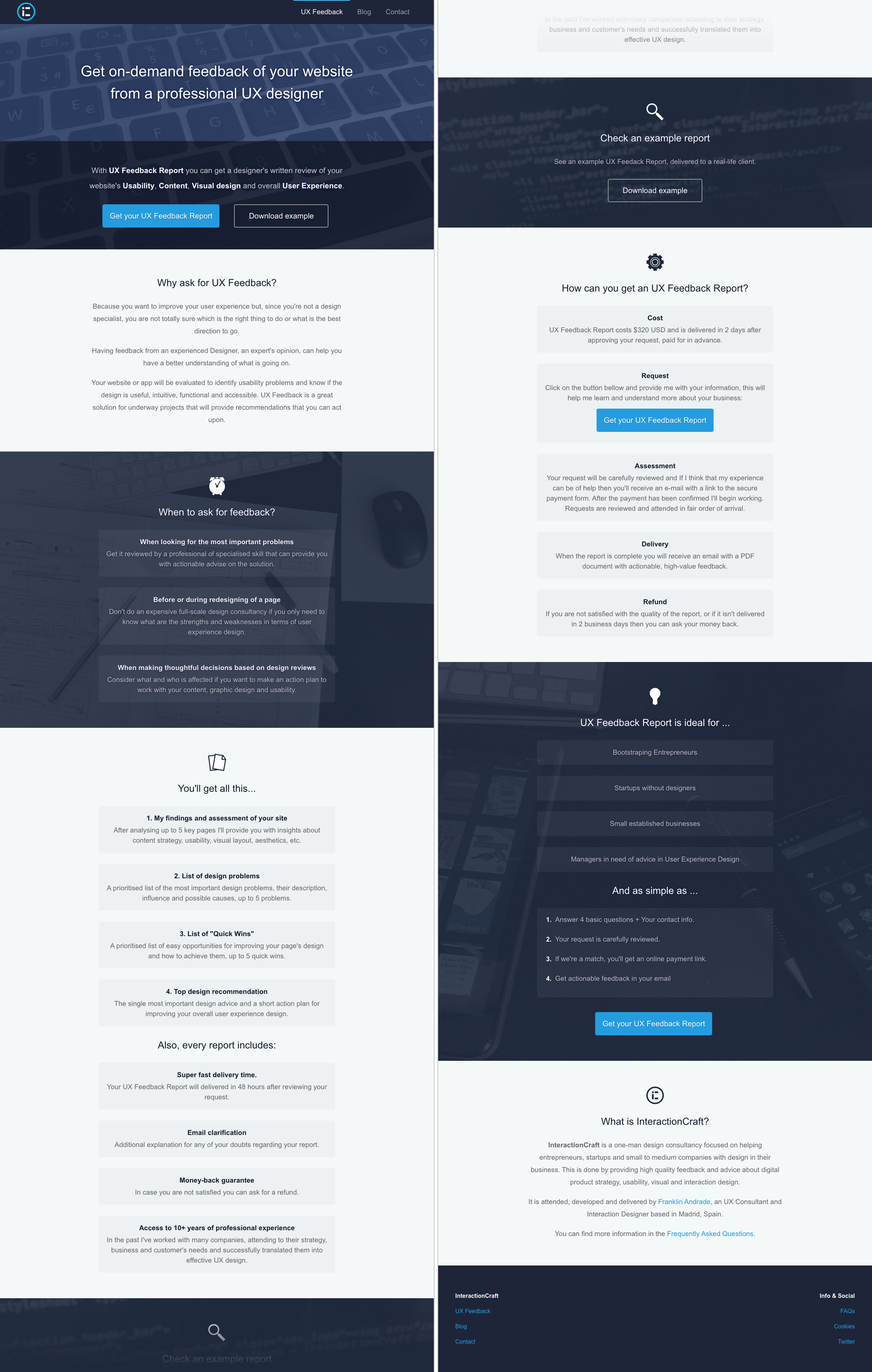
The PDF Report
An example before buying
My first client in january 2015 was AWA Rocks, here you can see a few pages from the older sample report that I made available to for potential clients, you can check the entire PDF file here:
You can also check some of the pages here:
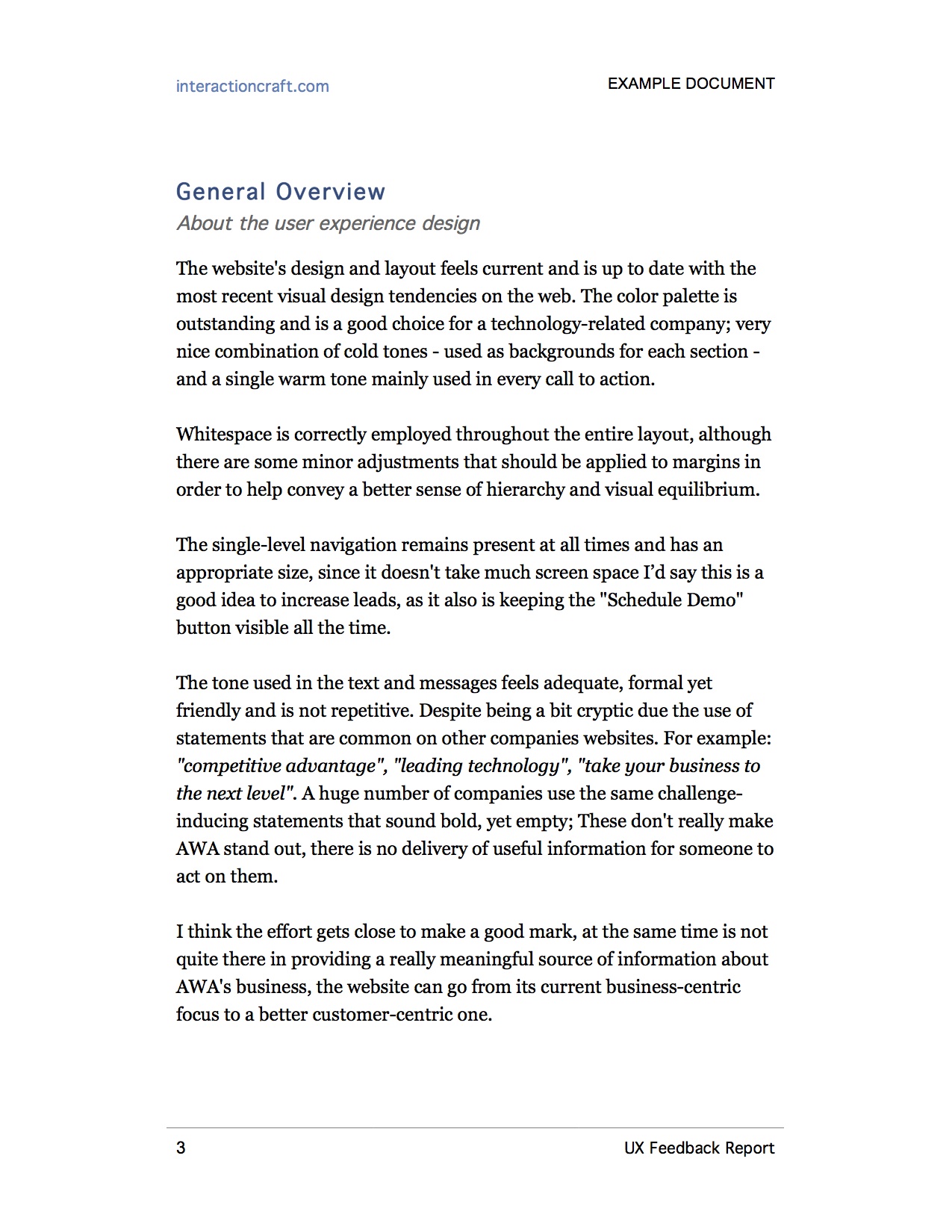
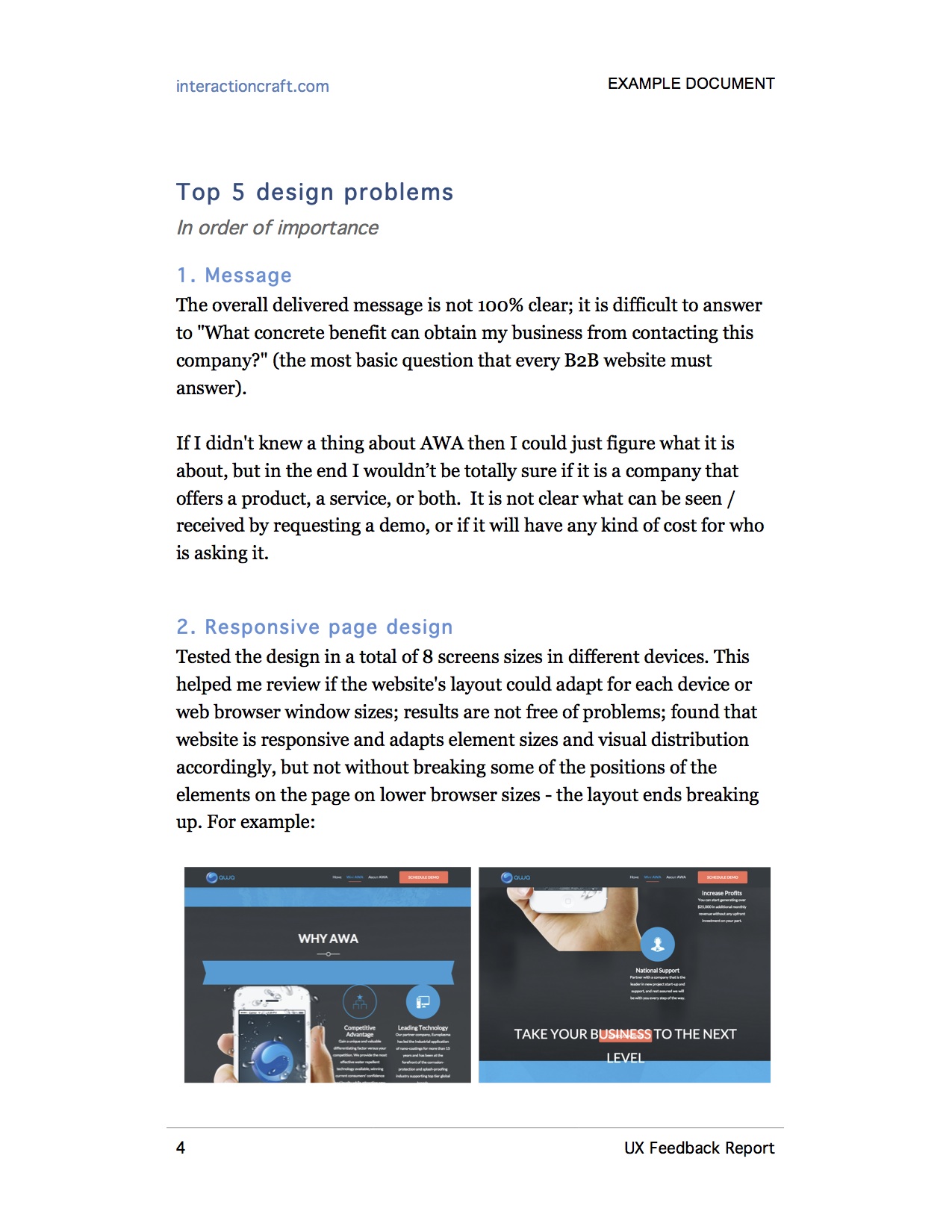
On these next 2 can be seen part of the quick wins and the design recommendation:
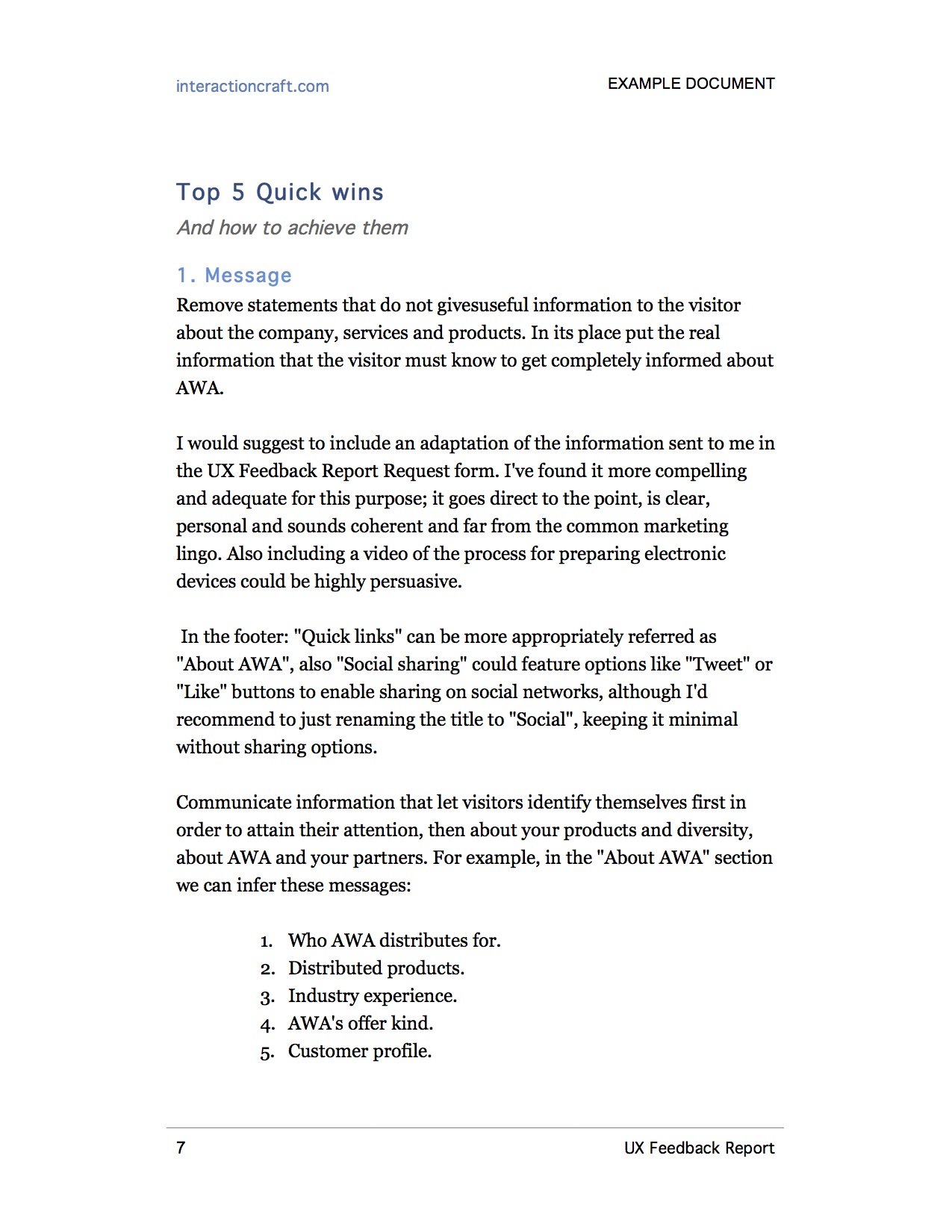
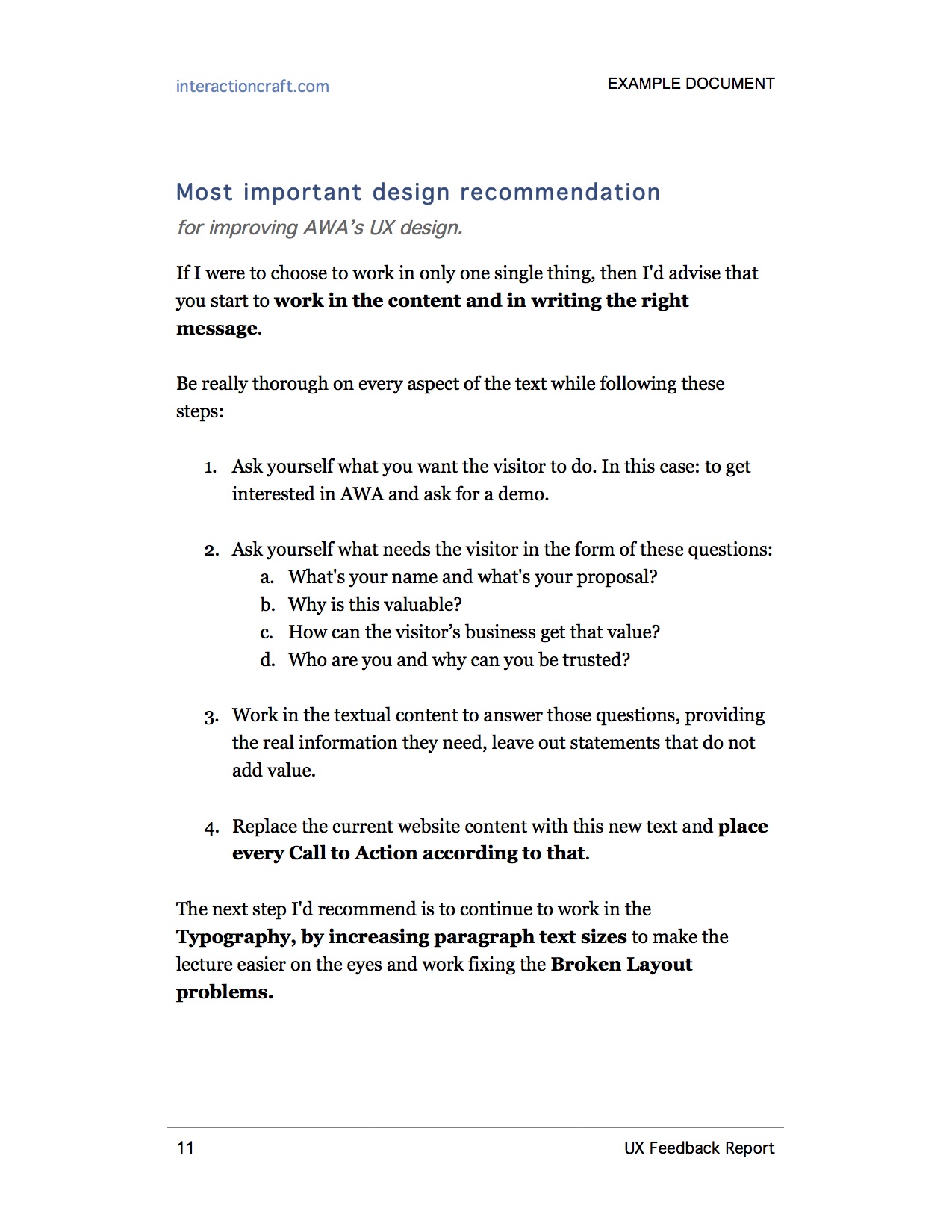
Final UX Feedback Report
Report content and Structure
The report evolved as I was working in it, while I can't link any of the new ones, here is the final content/structure:
- Cover: Includes the report name, client name, delivery date, my name, InteractionCraft Logo, InteractionCraft website, contact email address.
- Contents: A short document index with page numbers and section titles.
- About the Service and this Report: Details what is the UX Feedback Report, who wrote it, overview of its creation process and its purpose.
- About the "User Experience": A definition of what is UX, which aspects influence it and why its important, its positive effects if cared for and the negative effects if neglected.
- About this report for [Client's name]: Why this was being written, its purpose, its specific scope or special focus.
- Information provided by the client: The info that the client provided prior to starting the evaluation and writing the report, this information became in form of answers of a short online form.
- Methodology: Detailing the 5 steps to be followed, Free Consultation, Business Info, Deep Analysis, Documentation, Delivery + Q&A.
- Report Format and Structure: A short description of how the report is internally structured.
- Usability Rating Scale: Describing the problem severity that was asigned to each problem documented in the report.
- Screenshots: Screen captures of the website, application, specific segments, etc. referenced in the report.
- Assesment - General Overview: detailing my initial reactions and impressions, my opinion on the content, aesthetics, use of space and visual hierarchy.
- Assessment - Aanalysis: speaking in a more detailed way about the layout, content flow, usability, use of typography, color and sensation of completeness.
- Assessment - Interpretation: my opinion about the intended audience and the client's solution, use of graphic details, problem areas that lack effectiveness, aesthetic appeal.
- Assessment - Evaluation : my opinion of the aparent creative brief on the site and if I believe the design is working or not.
- Top 5 Design problems: In order of importance stating: the problem name, its description, its possible causes, its possible effects, its type, severity, frequency (persistence) and finally a couple of references from around the web that explain the problem or its solution.
- Top 5 design opportunities: and how to achieve them, stating the opportunity name, description, its type, reasons that make it an opportunity, its effects, how to achieve it.
- Most important design recommendation: for improving the UX. The recommendation title, its description, the top 3 reasons for this recommendation, a short action plan for achieving it and next steps that could be taken in which InteractionCraft can help.
- Follow Up: the process to be followed in case the client has any questions about the report, a short list of related consulting services that InteractionCraft can offer.
- Content References: a list of aditional references of subjects mentioned in the report.
- Back cover: the title, client, date, my name as the author, logos / id., URLs, contact and final call to action.